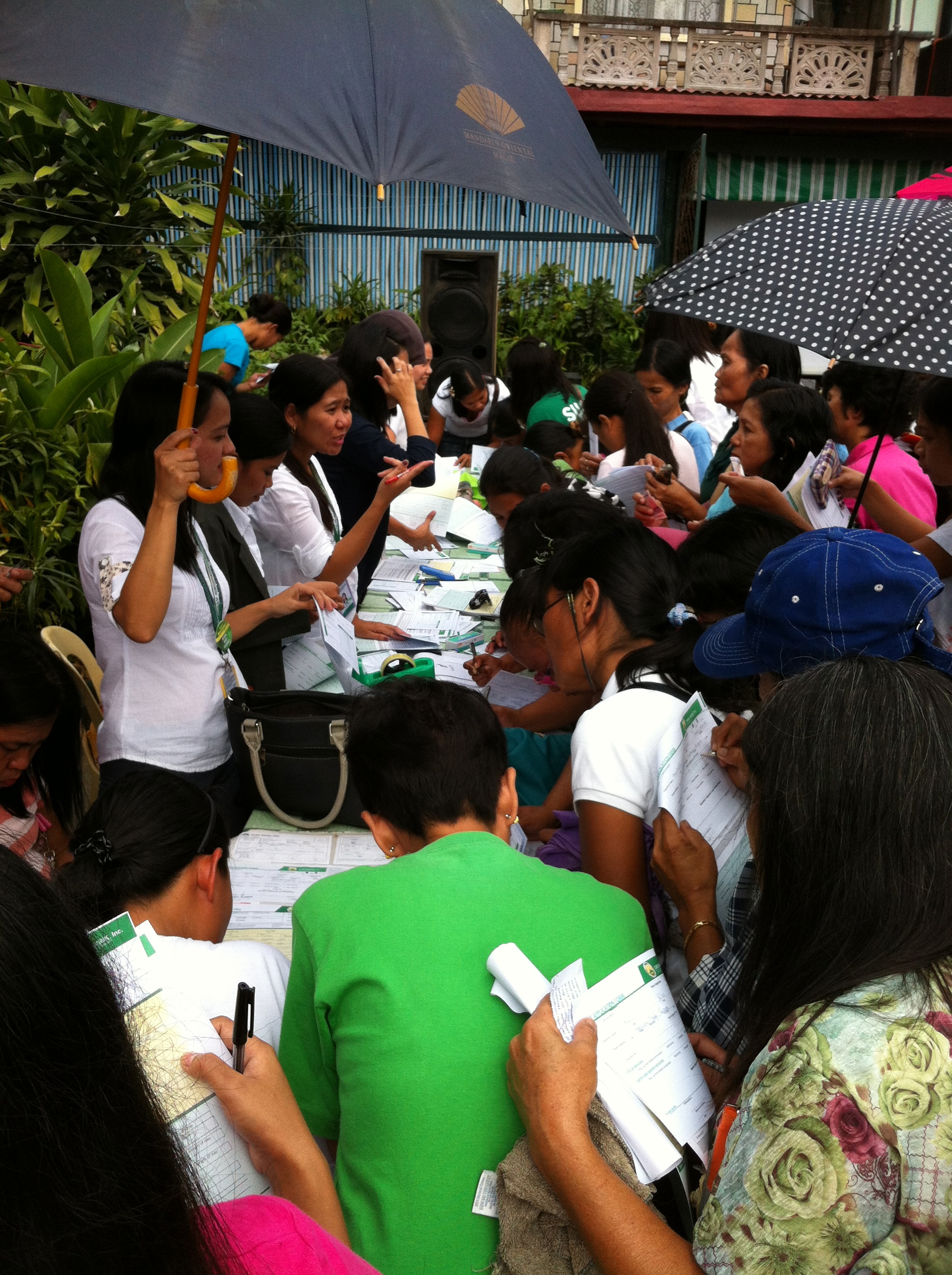Success at Scale: How CARD Bank activated 480,000 poor savers in the Philippines
Grameen Foundation just wrapped up a 4-year project funded by the Bill & Melinda Gates Foundation, in which we worked with CARD Bank in the Philippines to provide access to secure, accessible and convenient savings accounts targeted to the poor. There is lots of talk in the financial inclusion space about partnerships, innovation and getting to scale. By those measures, we feel like this project was a success on all counts – we opened 480,000 new active savings accounts and created the infrastructure for implementation of mobile financial services, while completing a holistic transformation with our partner to ensure a sustainable program.
First, this was a true partnership between CARD and Grameen Foundation. We had full-time staff on the ground working at CARD’s head office, allowing us to be intimately involved in leading change in the organization and heading off challenges as they arose. Grameen Foundation brought in consultants and provided project management and technical assistance, with a “lead, shadow, follow” approach for knowledge and skill transfer to CARD staff. CARD made it clear from the beginning that they were “owning” this work, and they ensured that all parts of the organization were engaged to make it work. Throughout the four years, there were lots of conversations (sometimes tough ones), plenty of give and take, and regular efforts to get back on track from both sides.
Second, the work we did together was truly innovative. When we started at CARD four years ago, we used a fairly traditional market research and product development approach. We listened to client needs throughout the process of introducing two new savings products. We created new staff roles specific to savings, which enabled a new deposit pick-up service. Two electronic delivery channels were created – ATMs for withdrawals and mobile financial services for all customer transactions. But when we saw that clients were opening accounts, but not necessarily using them or building balances, we piloted some interventions based on behavioral economics principles to change client behavior. We prompted clients to think about why they were saving, decide how much they wanted to save and what they could afford to put aside, and plan how they were going to reach their savings goals. Results indicated these interventions were successful in getting clients to use the accounts, make larger deposits and maintain higher balances.
 There is a lot of attention focused now on human-centered design for new products. Grameen Foundation is doing some exciting work in this area, but we believe that innovation is not just sexy product design work. At CARD, we also set up a marketing department where there had been none before. This was marketing with a capital M, i.e. strategic. We revisited the branding and value proposition of all of the savings products, and created materials that clearly communicated this to clients. We implemented clever ideas and events for client education, including a “savings caravan” and a new mascot that appealed to children as well as adults. We also had to figure out how to most effectively train and incentivize the CARD staff to focus on savings, ensuring high standards of customer service.
There is a lot of attention focused now on human-centered design for new products. Grameen Foundation is doing some exciting work in this area, but we believe that innovation is not just sexy product design work. At CARD, we also set up a marketing department where there had been none before. This was marketing with a capital M, i.e. strategic. We revisited the branding and value proposition of all of the savings products, and created materials that clearly communicated this to clients. We implemented clever ideas and events for client education, including a “savings caravan” and a new mascot that appealed to children as well as adults. We also had to figure out how to most effectively train and incentivize the CARD staff to focus on savings, ensuring high standards of customer service.
Left: a “savings caravan” in Tagkawayan)
On the management side, we iterated to find the best way to bring field staff and head office team together on a monthly basis to review product performance and implementation challenges, not only during our pilot, but well into the roll-out of the product across the country. CARD reviewed product performance in a deeper way than ever before, including analysis of savings behavior by poverty level of its clients. There were multiple and continual feedback loops that drove the team to tweak not just the products, but the work of all organizational focus areas needed to support savings mobilization. When decision-making got complicated, and one small change related to one product or process could easily impact another, we created a “Savings Committee” to ensure that an interdisciplinary team was reviewing and approving such decisions.
So, what was the result of all of this? We got over 480,000 savings accounts designed specifically for the poor into their hands and being used. These numbers will continue to increase as CARD completes the roll-out of one of its new products, and moves to the next phase of its mobile financial services pilot. Not long ago, this blog post indicated that the Philippines’ microfinance industry is experiencing a dramatic surge in savings balances. We believe the savings emphasis at CARD Bank, which provides 34 percent of the Philippines’ microfinance services, is one of the drivers that pushed savings balances to overtake loans in the Philippines. Now that’s scale.
Julie Peachey directs Grameen Foundation’s social performance management activities across the organization.
- Categories
- Uncategorized
